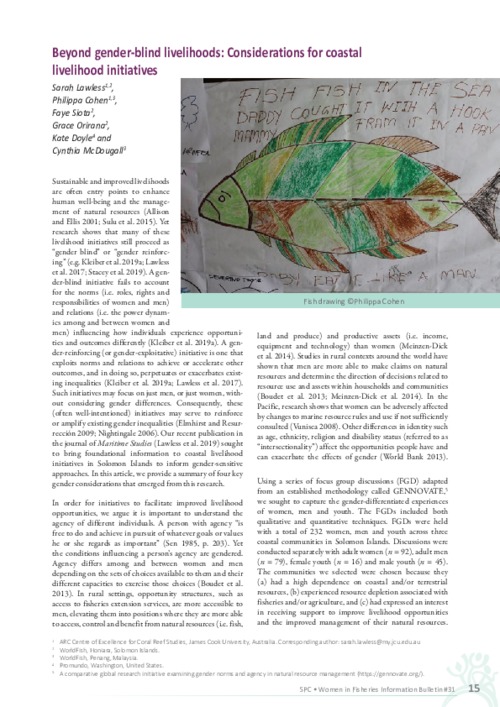Beyond gender-blind livelihoods: Considerations for coastal livelihood initiatives

Sustainable and improved livelihoods are often entry points to enhance human well-being and the management of natural resources (Allison and Ellis 2001; Sulu et al. 2015). Yet research shows that many of these livelihood initiatives still proceed as “gender blind” or “gender reinforcing” (e.g. Kleiber et al. 2019a; Lawless et al. 2017; Stacey et al. 2019). A gender-blind initiative fails to account for the norms (i.e. roles, rights and responsibilities of women and men) and relations (i.e. the power dynamics among and between women and men) influencing how individuals experience opportunities and outcomes differently (Kleiber et al. 2019a). A gender-reinforcing (or gender-exploitative) initiative is one that exploits norms and relations to achieve or accelerate other outcomes, and in doing so, perpetuates or exacerbates existing inequalities (Kleiber et al. 2019a; Lawless et al. 2017). Such initiatives may focus on just men, or just women, without considering gender differences. Consequently, these (often well-intentioned) initiatives may serve to reinforce or amplify existing gender inequalities (Elmhirst and Resurrección 2009; Nightingale 2006). Our recent publication in the journal of Maritime Studies (Lawless et al. 2019) sought to bring foundational information to coastal livelihood initiatives in Solomon Islands to inform gender-sensitive approaches. In this article, we provide a summary of four key gender considerations that emerged from this research.
Permalink
Date Available
Type
Publisher
Countries
ISSN
1028-7752
Copyright
CC-BY-NC-4.0
Research Themes
Topics
Language